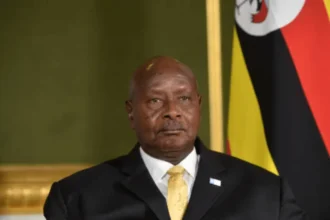Thirty-five children died in a heart-wrenching event during a crowd surge at a Christmas funfair in Ibadan, a city in southwest Nigeria. Authorities stated that six others were hospitalized during the event at the Islamic High School in the Bashorun district.
Why was the crowding so bad?
Along with free food, the “End of the Year Christmas Funfair” planners pledged to give each 5,000 children 5,000 naira (approximately £2.50; $3), drawing an astonishingly large attendance. Residents say more than 10,000 people—mostly kids—gathered at the site.
According to reports, the crash happened when the major planners arrived, causing anarchy as people battled to get in. One local parent who had taken her kids to the funfair called the scene “complete pandemonium.”
She remarked, “We arrived as early as five a.m. to guarantee our children would be among the first to get the promised money and food.” But the throng had grown wild by the time the organizers arrived.
What Damage Does it Cause to Families and Lives?
Medics from hospitals all around Ibadan detailed the terrible aftermath. A spokesman at one hospital disclosed that only two of the six children admitted had survived. “Four died despite our best efforts,” the spokesman stated. At another facility, a doctor discovered three dead bodies in the ER.
“This is a great tragedy,” President Bola Tinubu said, sympathizing. I relate to the parents who have lost their children. We shall look at everything thoroughly to guarantee responsibility.
Who Is Responsible for This?
Eight individuals engaged in event planning—including city celebrity Naomi Silekunola—have been arrested by police. It is yet unknown what happened before the lethal crash.
Confirming the arrests, a police spokesman said, “We are committed to uncovering how such a tragic loss of life occurred and will hold those responsible to account.”
Why did so many show up for the event?
The relatively high attendance reflects Nigeria’s worsening economic problems. Many families face dire circumstances as the nation battles its most significant financial crisis in decades.
“This goes beyond a funfair,” said an economist. “It has to do with survival. Many families would find a significant difference even with 5,000 naira. That explains the relatively high attendance.
Has this occurred recently?
There is no one single instance here. Similar catastrophes have dogged Nigeria this year as people swarm to activities providing help.
Two female students and 23 others were killed and injured during a rice distribution program following a crowd surge at Nasarawa State University in Keffi, close to Abuja, in March. Seven individuals were slain in another throng at a cash handover event three days later in Bauchi State.
Five individuals died in Lagos earlier in February during an auction of seized rice run by the Nigerian Customs Service. A horrific stampede left scores of people injured as a throng rushed for the reduced bags.
What Policies Are Governments Using?
The Oyo State Government advised parents looking for their children to contact neighbourhood hospitals. “Our prayers are with the victims and their families,” stated a government official. We are doing everything possible to guarantee the injured receive appropriate treatment.”
The tragedy in Ibadan grimly reminds us of the severe financial difficulties millions of people face and the pressing necessity of improved crowd management for public events. The city laments the passing of its youngest citizens, whose lives were cut short in the search for optimism.
Angola Protests: Deadly Clashes and Mass Arrests Amid Fuel Price Hikes








